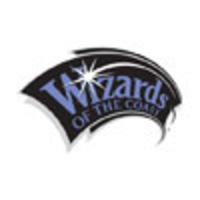I've been fascinated off and on by the Black Hack. I appreciate the simplicity of the system, I'm fascinated by the idea of player facing rolls in combat, but haven't really played it yet. Anyway this little post is about the Usage Dice.
For those that don't know the Usage Dice works it goes like this. An item, usually a consumable has a die number U12 would be a 1d12, U10 would be 1d10. If you roll 1-2 your Usage Die drops one die, so down to U10, then U8, U6, U4. Naturally the odds of rolling a 1-2 increase as the size of the die drops. You roll 1-2 on 1d4 and your item is depleted. Usage Die are typically used for torches, food, and arrows but I think the idea can be expanded far more than that.
Reputation
A new character might start with U20. Nobody has heard of them. Whenever they complete an adventure they roll the usage die. Then construct reaction tables to use the Usage Die. I don't roll reaction for the big bad or lieutenants but different NPC and lackeys, why not. In this system you either have a group Usage Die or use the lowest Usage Die in the band. The reaction table provides randomness. So construct the table so that low results indicate lackeys running away or surrendering and high results indicate the NPC And lackeys have no idea and assume the characters are just another group of push-overs to bully and threaten.
So the idea is that the mechanic ensures the reaction of NPCs is random but different as the character or party becomes more and more (in)famous. When/if the players journey a good distance the Usage Die can go up again.
Weapon Damage
Weapon damage is easy. The usage of the weapons equals the damage die of the weapon. Roll a 1-2 on your attack and the usage die and damage die both drop to the next die. So Aleena uses a weapon that does 1d10 damage but rolls a 1 on her to hit roll. That drops her weapon to U8 and does 1d8 damage now. If she rolls a 1-2 again it'll do 1d6 damage. She better get the thing fixed or have a backup. This provides a slow ticking warning about the weapon quality.
Once that weapon breaks Aleena will scrounging weapons which might not start at full value.
Ship Damage
I've always liked the way RuneQuest handled ships. Each ship had what in effect were armor and Hit Points and if you run out of hit points the thing sinks. I think using a usage die might be better than Hit Points as it is less, precise. In the heat of battle you might not know that a few cannonballs hit you below the water line.
Mass Combat
The last example, for now, would be mass combat. Maybe not a really big mass combat but a large skirmish where say the players stand with a bunch of allies. Break the local combatants down into groups that correspond to a die. Then roll the players combat as usual, and roll the usage die for the other combatants and tell the players the results. The guys on the flank, well they've got like 6 standing at this point. Their enemies don't look any different.
So that's the basics. This might add more bookwork than desired, especially the weapon damage one, but I don't think so.


